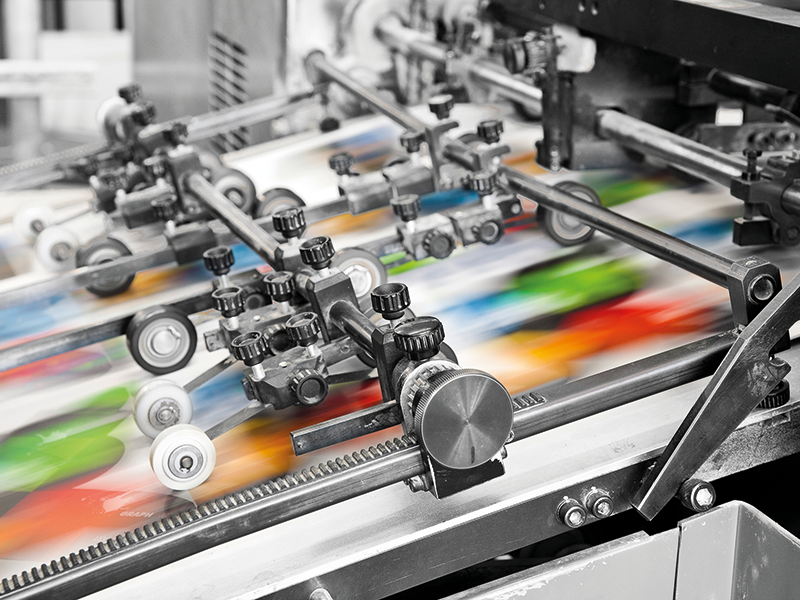Global sales for printing presses and other equipment is expected to reach $16.79 billion in 2023, according to the Smithers market study The Future of Print Equipment Markets to 2028.
At constant pricing, the annual sales of new presses, including pre- and post-press equipment, has lost $2.37 billion since 2018. This suggests the post-Covid marketplace is reacting to profound changes in demand for print. Smithers forecasts further moderate declines over the coming five years. Per annum sales will decline (-0.5% year-on-year) to reach $16.41 billion in 2028, at constant prices.
Smithers forecasters expect diminishing demand for most traditional analog press types. The greatest falloff in sales will be for litho presses. The outlook for heatset and coldset machines is impacted by a radical drop in demand for printed magazines and newspapers.
About the Report
The Smithers Future of Print Equipment Market report focuses on the digital print processes and analog printing equipment that print-service providers and packaging converters use for commercial, packaging and production printing. It also includes pre-press and post-press finishing equipment that are part of the overall print process.
The Future of Print Equipment Markets to 2028 provides details on the installed base, as well as current and future sales for print equipment worldwide. Smithers expert analysis of the contemporary commercial landscape is quantified in over 150 tables and figures. The data is segmented by 29 press types and equipment formats, 8 world regions, and 58 national markets.
The growing importance of service, support, software and consumables to the profitability of print equipment suppliers is also discussed.

Key Findings
Smithers analysts project that:
- Sales of digital equipment are expected to grow (+1.4%) by 2028.
- Sales of conventional equipment is expected to decline (-1.4%) by 2028.
- The decline will most evident in developed markets (North America, Western Europe, Japan, and Australasia), where the transition to electronic media and communication is most advanced. Press sales alone in these four markets combined will be $6.11 billion in 2028, down 19% compared to 2018.
- Offset litho will lose sales volume. partly due to the installations of high-capacity VLF (very large format) presses and a contracting base of presses in smaller B1, B2, and B3 formats.
- Flexo will be the only analog print process to increase equipment sales over the next five years, primarily due to its popularity in higher volume packaging and label work. Sales of flexography print equipment are expected to grow to 2028 (+1.7% CAGR)
- Inkjet and electrophotography (toner) equipment sales will increase over the next five years. In 2026, new sales of such digital print systems are expected to overtake analog for the first time.
- Inkjet presses will account for the vast majority of this increase in inkjet and electrophotography equipment sales. It is the focus for much R&D work, and multiple higher-throughput presses for specific end-use segments in packaging are now seeing their first installations. Speed and quality on inkjet are improving, while buyers demand for more customized and shorter run commissions will see these take more jobs from analog.
- In 2028 Smithers estimates the installed base for high-end single-pass inkjet will exceed 3,800; up from a projected 3,048 in 2023, and 1,998 in 2018.
- The number of operational sheetfed inkjet presses is increasing even faster. The number of sheetfed inkjet presses in operation is forecast to be 3,276 in 2028, which is up from 1,451 in 2023 and just 385 in 2018.
Additional Insights
From a technical perspective, improvements in automation will continue to be seen on all press types, including integration with online platforms. As the supply chain evolves, print OEMs can tap new revenue with smart software and support services, helping operators maximize up time on their presses, resolve faults quicker, and optimize on-press performance.
High oil and gas prices have stimulated interest in more energy-efficient press equipment. These will help reduce the carbon footprint of the print segment.
Other green technologies include:
- improvements in set-up,
- aqueous inks and coatings,
- better substrate handling for paperboard grades,
- inks formulated with more bio-based ingredients, and
- optimization for better deinking at end-of life.
The US will remain the single largest market for new equipment sales, ahead of China (second), Japan (third), the UK (fourth), and Germany (fifth) place. The US print equipment market is forecast to reach $3.4 billion by 2028
High-growth opportunities exist for OEM sales in new markets in Asia. But no major changes among the top ranked countries will happen across the next five years.
To find out more about the exclusive finding in the full report, visit: The Future of Print Equipment Markets to 2028
For a list of other Smithers printing-related market studies, visit: Smithers Printing Market Reports.
